AI detectors emerged to counter AI-generated content on the internet. Recently, ChatGPT shook the wave of the content writing space, and now a human can almost not tell which content is written by a fellow human and which is generated with AI. For context, Google can detect AI content, even though they claim not to be against AI-enabled written content.
The impact of AI-written content on SEO has not been directly benchmarked by Google, but it presents a more grave issue when it comes to leveraging AI-powered tools to create content – plagiarism. Because AI-powered writing tools are built on top of Large Language Models (LLMs) that have been trained on billions of pages of data in the form of books, news, and articles of the internet, they tend to plagiarise written content.
Despite this challenge, a recent Gartner report forecasts that by 2022, 70% of organizations will be experimenting with immersive technologies, including AI content generators, for both consumer and enterprise use. Another 25% will deploy these technologies in production.
This leaves no doubt that content marketers have to find ways to strategically leverage AI tools to achieve an optimal mix of efficiency and creativity in content production. At the same time, it’s critical to remember that AI is a tool designed to enhance human creativity, not replace it. For example, tools like Grammarly, OpenAI’s ChatGPT, and Jarvis.ai can speed up the entire content pipeline, from ideation to drafting to proofreading.
The final steps, however, including a deeper understanding of audience needs, creating compelling narratives, and infusing the brand voice, should remain a human task. AI content detectors can help you identify where not enough effort has been put into these “human” phases, helping you craft better content.
Thus, marketers should use AI content detectors to help ensure the quality and uniqueness of their AI content.
This article discusses what AI content detectors are, how they work, their level of accuracy and reliability, and some of the best AI detectors to try out.
In This Article
What are AI content detectors, and how do they work?
AI content detectors are tools that check for AI imprints in a piece of content. They statistically determine whether a piece of written content was created by an AI or a human. The development of tools like ChatGPT that create well-written content with a well-constructed prompt has made it harder to distinguish between human-written and AI-written content. Hence, the need for AI content detectors has arisen.
To better understand how AI detectors work, it is critical to understand how AI-generated content is created. AI-generated content is produced with Natural Language Processing (NLP) techniques that enable computers to imitate human language patterns based on Large Language Models (LLMs) trained on large datasets. AI detectors work in reverse.
AI detectors (usually AI writing detectors) work with language models that predict the likelihood of a word or phrase being written by a computer in a sentence. Their prediction is used to score how human-like content is.
In short, AI detectors serve as a sort of quality assurance, ensuring that content is original and unique.
How accurate and reliable are AI writing detectors in general?
AI plagiarism checkers and writing detectors have been on the rise since ChatGPT proved its power in the content creation space. With their level of accuracy in question, these AI detection tools have claims to their respective accuracy. Some even boast of 90 percent plus accuracy in detecting AI-written content.
However, the accuracy of these tools is not always foolproof, and they can be bypassed in certain instances. One way in which these tools can be bypassed is through paraphrasing. Paraphrasing can be done by humans, but there are also content optimizers that can help to automate this process.
Another way in which AI detectors can be bypassed is by infusing uncommon words into the AI-written content. This can help to boost the originality of the content and make it more difficult for the AI writing detector to identify whether the content is being generated by an AI tool or not.
That said, while AI writing detectors do very well in detecting the imprints of AI tools like ChatGPT in written content, they are not infallible. It is important to exercise caution when relying solely on their accuracy. They are most effective as part of a robust editorial process that also ensures you maintain the “human touch” in AI-assisted content.
This includes having experienced editors and content strategists review all content before it’s published. You can also establish guidelines specifying how and when AI tools should be used. By making sure humans have the final say, you can ensure that your content retains its authenticity and relevance, no matter how advanced AI becomes.
8 best AI content detectors worth trying
AI should be seen as a strategic partner in content production, providing support, speed, and scale to your team’s efforts. However, in today’s digital landscape, it’s crucial to safeguard your brand’s integrity and credibility. These AI content detectors can help you get the best of both worlds with large-scale efficiency especially when they are used to complement, not replace, human judgment and intuition.
1. Harvard AI Lab’s GLTR
The aim of GLTR is to use the same language models that content generators use to generate text to detect them. It has been trained on the GPT-2 117M language model from OpenAI. It is thus expertly good at recognizing text generated by ChatGPT-2 and its later versions.
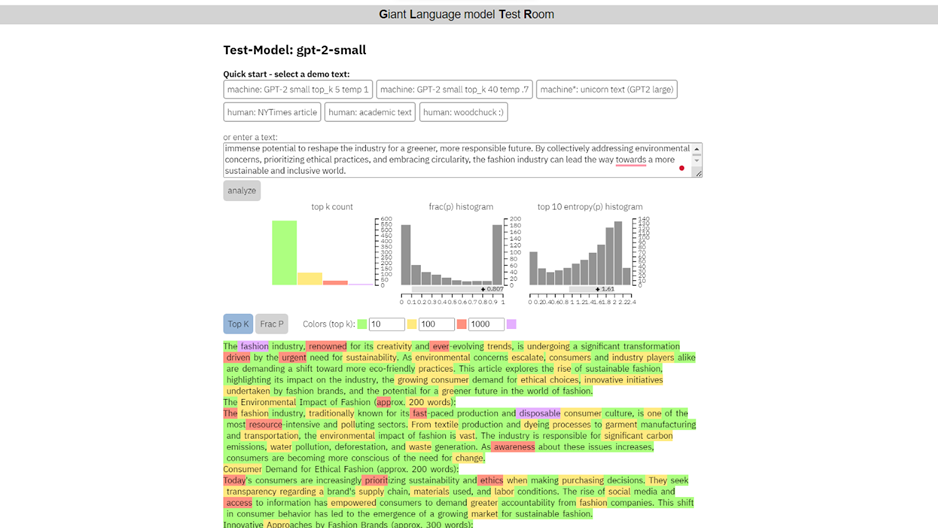
It ranks the likelihood that each word is AI generated across three categories and uses color-coding for easy human interpretation. Words among the top 10 most likely to be AI-generated are marked green, the top 100 in yellow, and the top 1,000 in red.
Features
- Simple color coding makes results easy to interpret.
- Trained on GPT models, so it’s extra good at predicting them.
Pricing
- Free
2. OpenAI’s GPT-3 Detector
OpenAI developed its own AI language detector alongside other generative tools in its AI suite. It trained this AI content detector tool using datasets of both AI and human-generated content on similar topics. Data was also obtained from retraining data and human demonstrations on prompts submitted to InstructGPT.
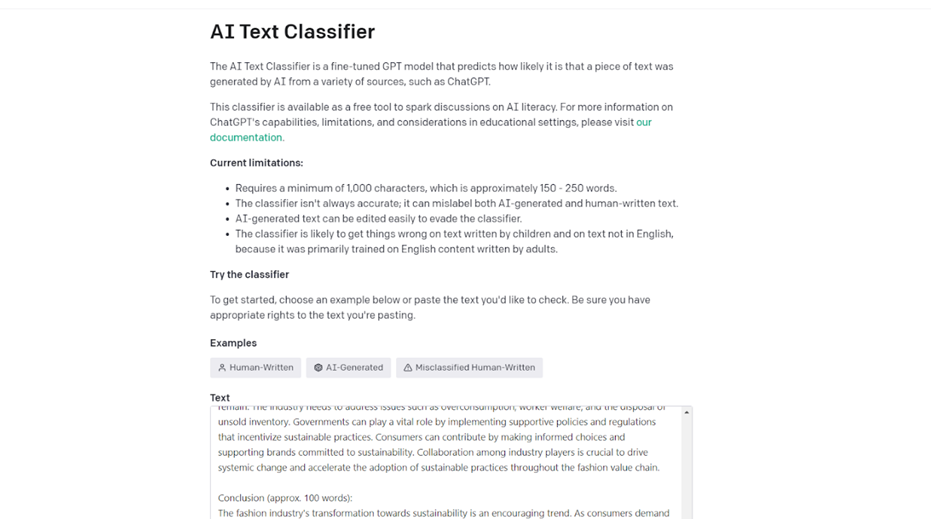
In preliminary tests, it could correctly detect content as “likely AI-generated” 26% of the time. But, its accuracy goes up the longer a text or essay is. Its main goal with this tool is to combat false claims that AI-generated text was created by humans, such as automated misinformation campaigns, academic dishonesty, and positioning AI chatbots as a human.
Features
- New and improved versions are continually developed.
- Trained on massive data sets.
- Performs better on larger content pieces.
Pricing
- Free
3. Content at Scale AI Detector
Content at Scale AI writing detector is a free AI detector that forecasts the most probable word combinations that statistically lead to higher AI detection probability. It is trained with billions of pages of data to increase its chances of accurate predictions.
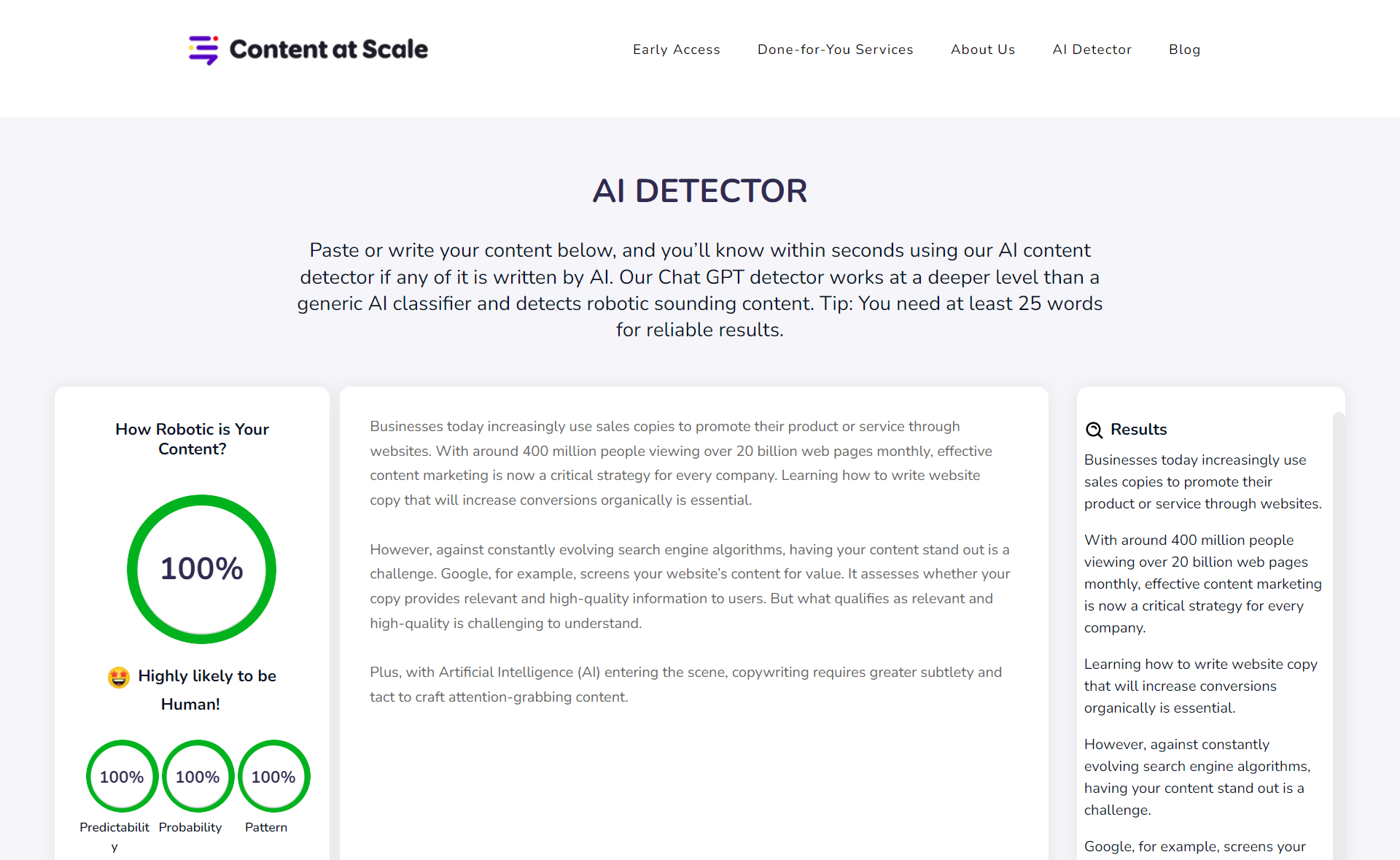 Human-written content
Human-written content
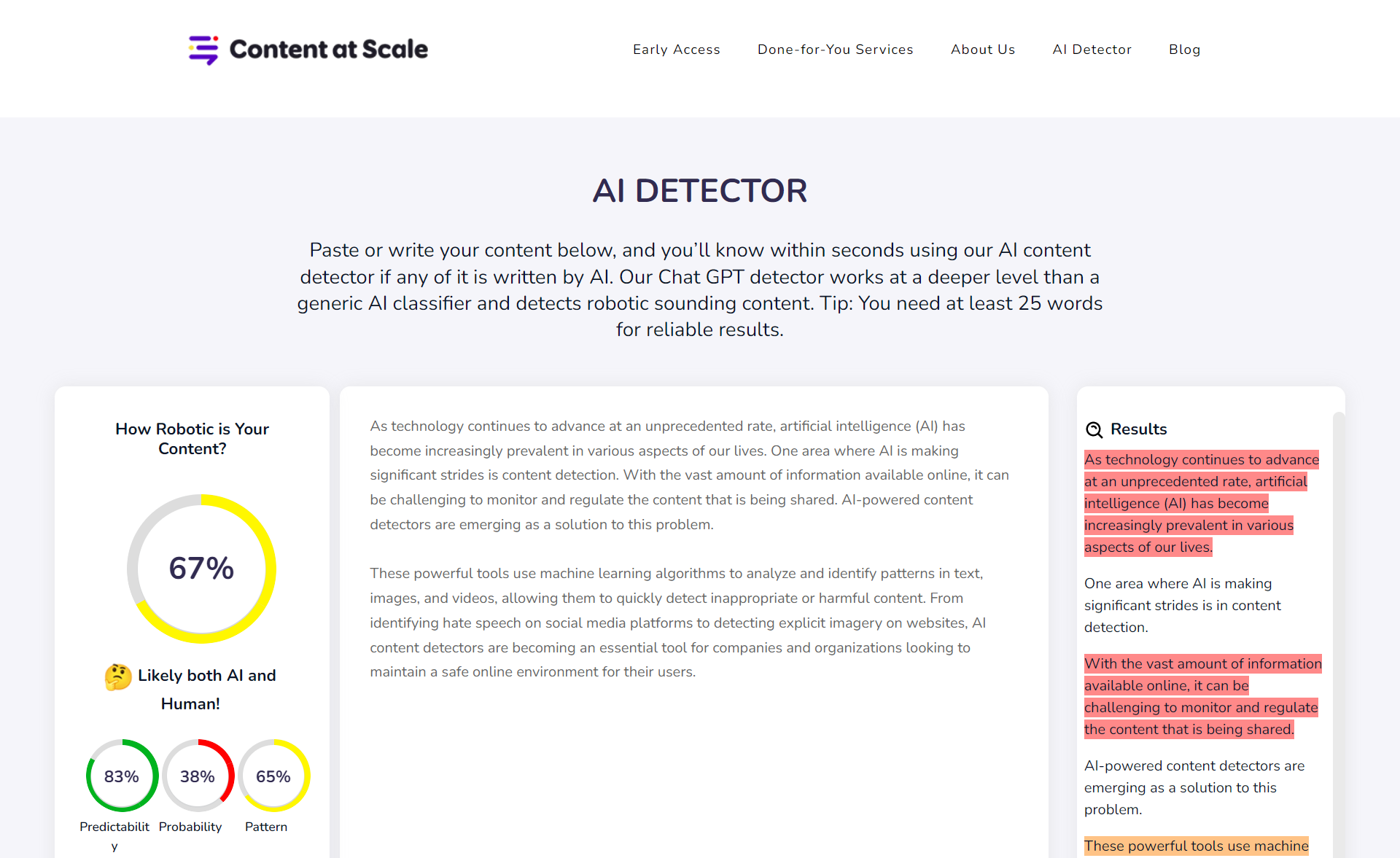 AI-generated content
AI-generated content
It breaks down the analysis of written content into content predictability, probability, and pattern. The most interesting part of Content at Scale is its relevance. Unlike some AI detectors, Content at Scale as a ChatGPT detector scans for all versions of GPT including GPT-4!
Features
- It can function as a ChatGPT detector.
- It uses an up-to-date AI detection mechanism.
- Suitable for academics, SEO, marketing, and educational content.
- It offers an AI writing tool to assist with the content writing process.
Pricing
Free
4. Originality.ai
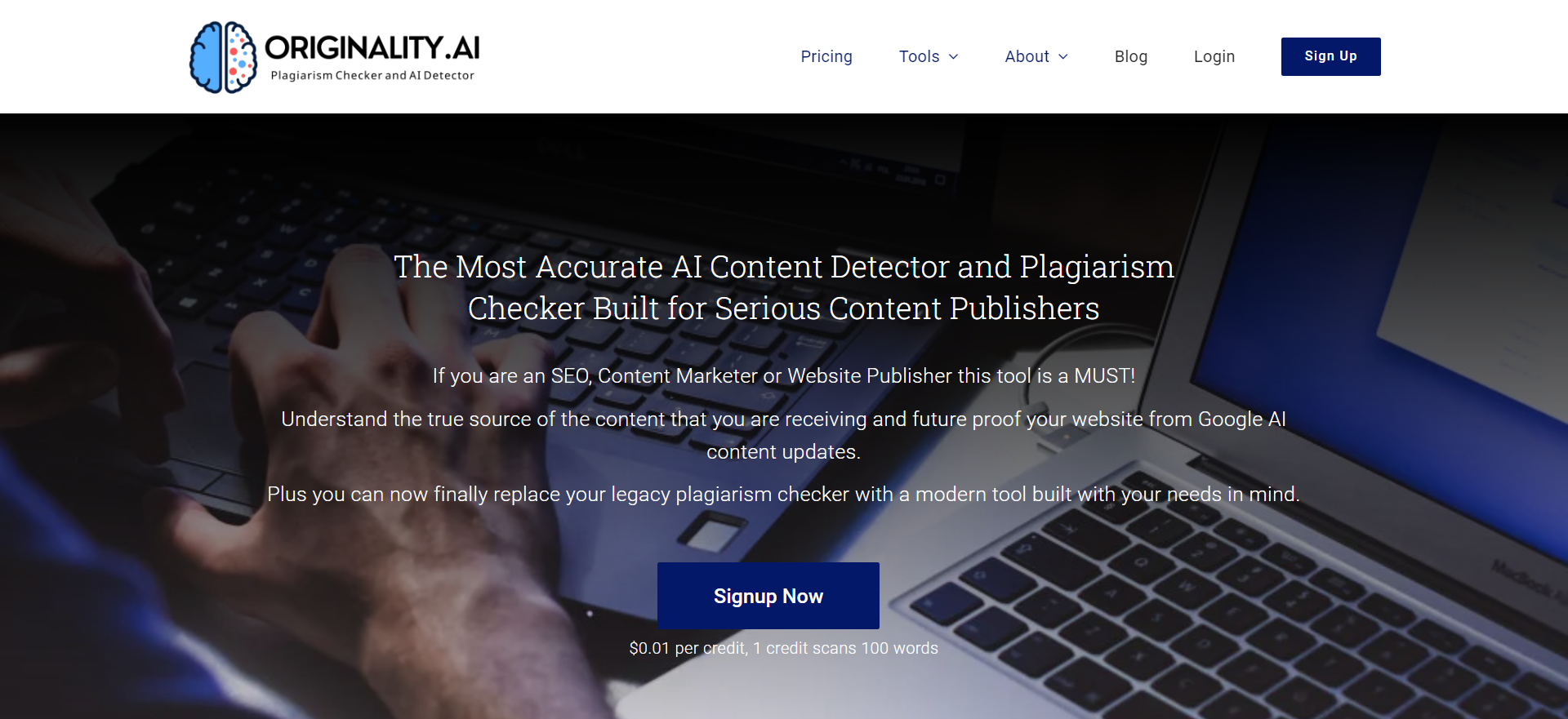
Originality.ai is an AI detector and AI plagiarism checker built with content marketing personnel in mind. It accurately detects watermarks of AI content generation tools like ChatGPT, GPT-2, GPT-3, GPT-4, and Google’s Bard. Additionally, it also detects paraphrases in existing written content by QuillBot.
This tool is specific to its audience. It is focused on ‘serious’ web publishers, content agencies, and website buyers with the aim of detecting plagiarism and assisting in producing unique content without AI imprints.
Features
- It provides AI writing detection and plagiarism checking.
- It checks for paraphrased content by QuillBot.
- Team management with unlimited members.
- Automatic billing.
- Edit history scanning per user.
- Unlimited scans for plagiarism and AI detection.
Pricing
Originality.ai is billed at $0.01 per credit. 1 credit scans 100 words.
5. GPTZero
GPTZero surfaced around the time ChatGPT was flexing its use cases in content writing in the education niche. As such, it can be regarded as primarily a ChatGPT detector, but it is built as an all-around AI detector with academics in mind.
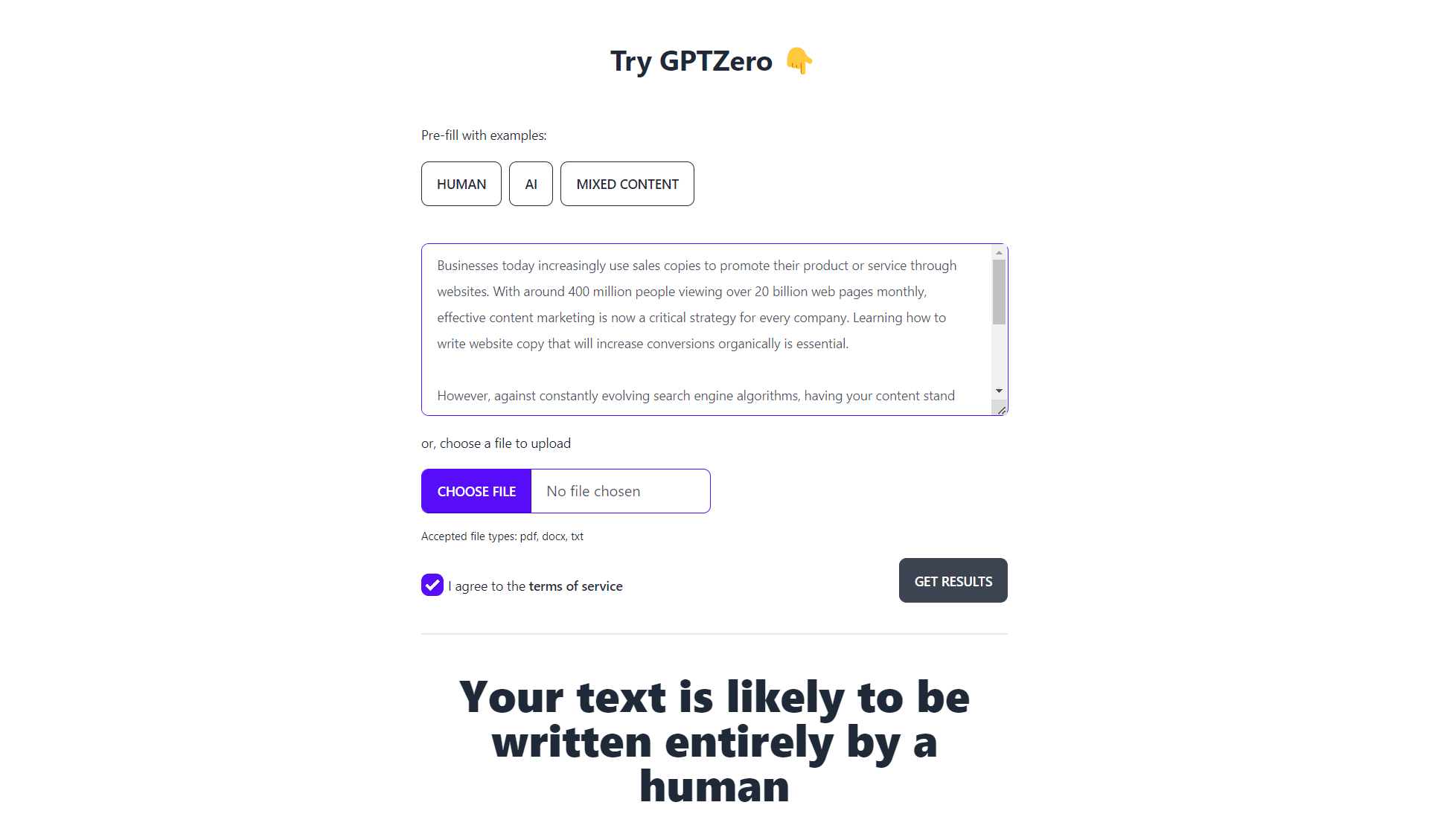 Human-written content
Human-written content
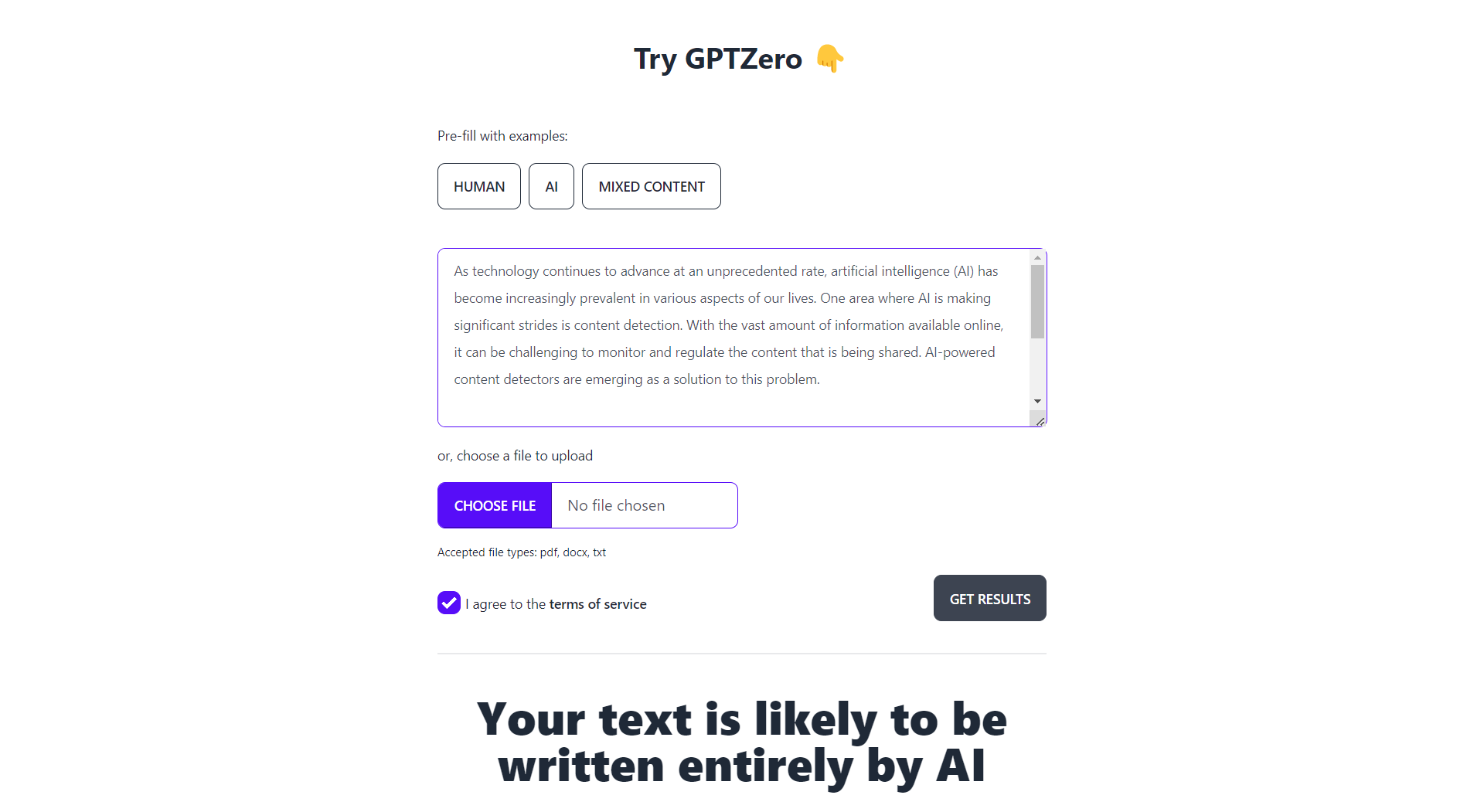 AI-generated content
AI-generated content
GPTZero reports two plagiarism indicators in the form of ‘perplexity’ and ‘burstiness’. Perplexity indicates the level of familiarity of GPTZero with the text. This is primarily because GPTZero has been trained on related data. If GPTZero is relatively familiar with the text, it will yield a lower perplexity score. Otherwise, it would yield a higher perplexity score, indicating that the content is more likely to be generated by a human.
The burstiness score compares the variations of the sentences in a text. AI-written sentences vary less in thought flow, scoring lower in burstiness. Humans, on the other hand, write with more variations in thoughts, so the burstiness score of human-written content will score higher.
Features
- GPTZero provides four free text analyses per hour.
- It supports text analysis on uploaded files.
- The pro version supports multiple file uploads.
Pricing
Free:
- 5K character limit per document.
- Three files limit per batch upload.
GPTZero Educator
- 50K character limit per document.
- Supports unlimited batch file uploads per run.
- Analyze up to one million words per month.
- Finetuned detection model for educators.
GPTZero Pro
- 50K character limit per document.
- Supports unlimited batch file uploads per run.
- Analyze up to 1.5 million per month.
- Access to API for software integration.
6. Writer.com AI Content Detector
Writer is a robust AI writing platform that offers amongst others – AI content detection. It is an easy-to-use one-stop AI detection tool that allows you to analyze written content for AI imprints before publishing.
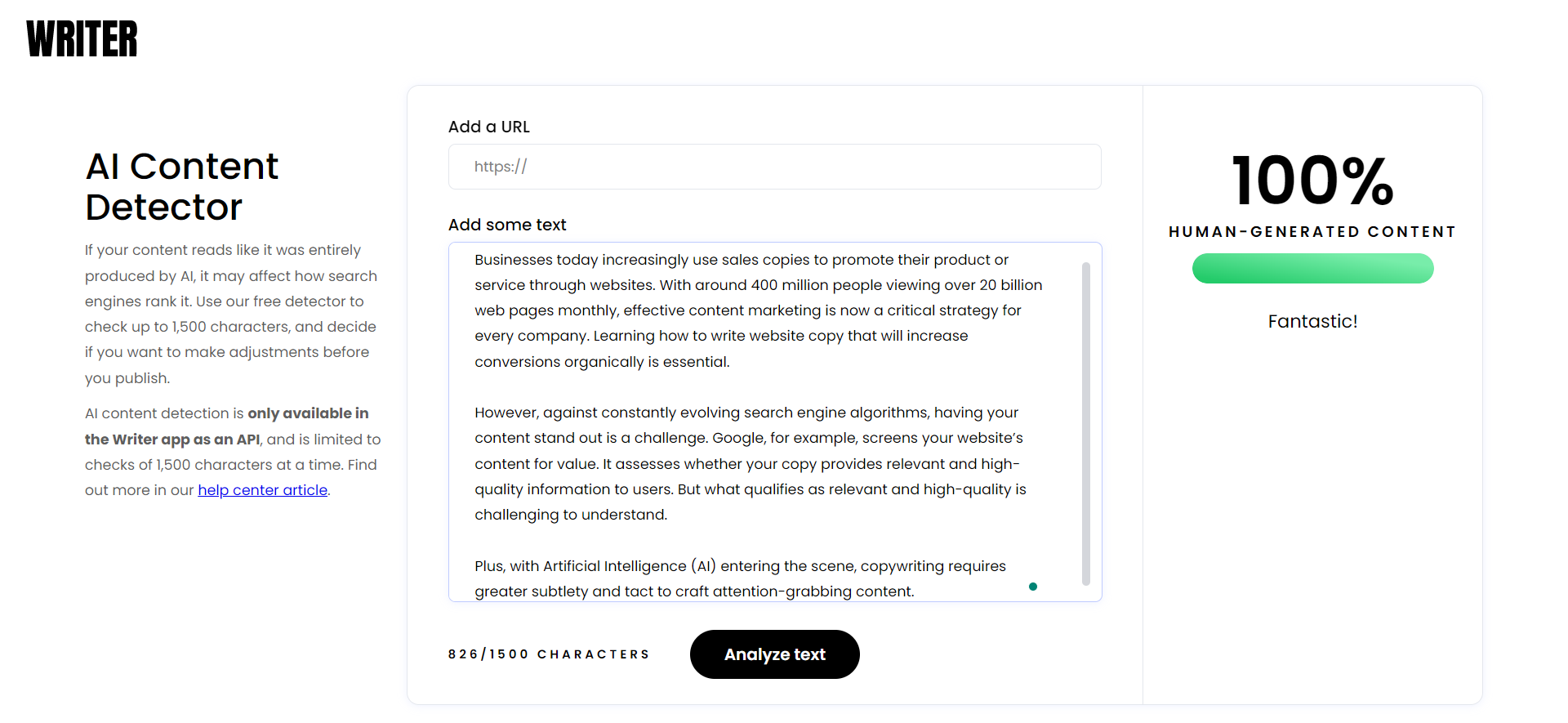 Human-written content
Human-written content
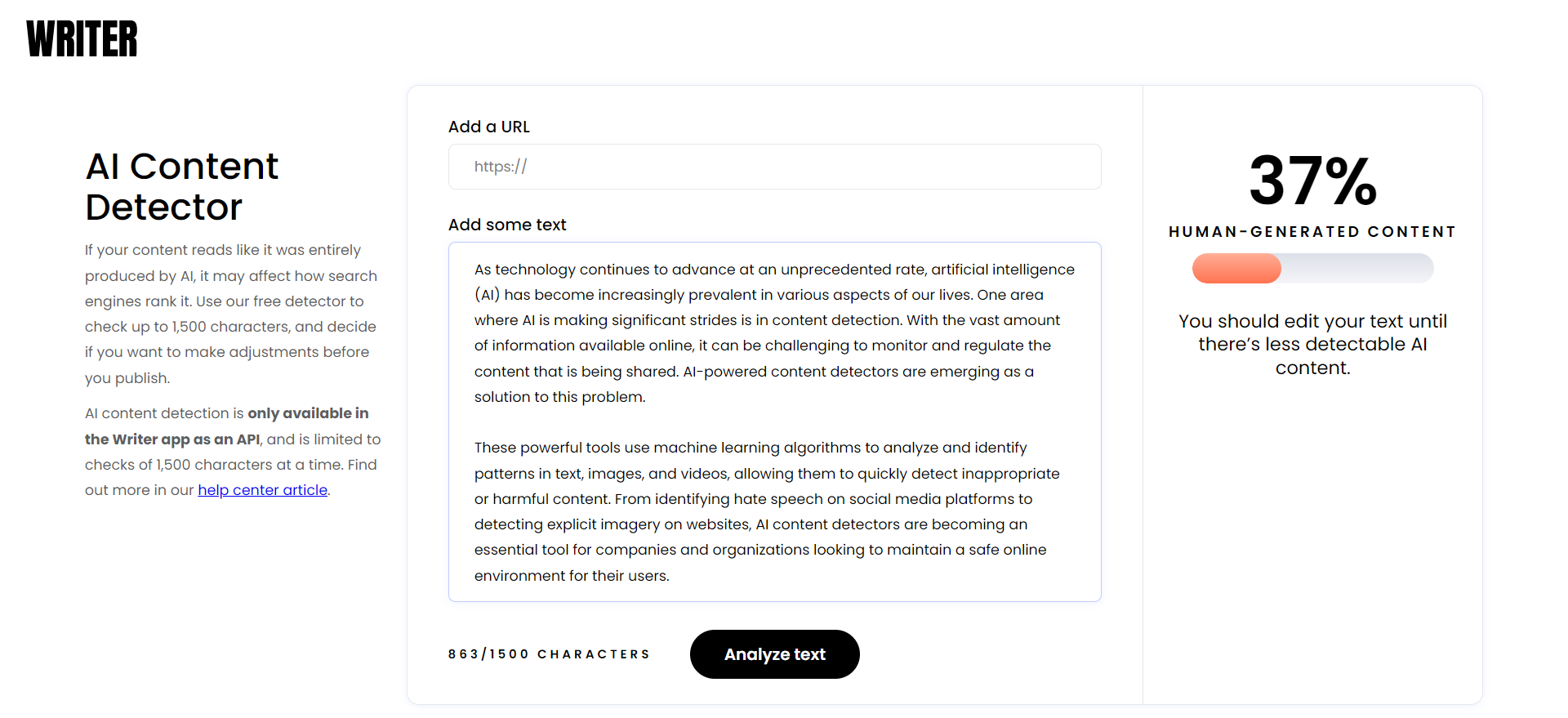 AI-generated content
AI-generated content
The Writer AI content detector returns a percentage score of how likely the analyzed text is written by a human and an additional suggestion on how to improve.
Features
- Easy-to-use AI content detector.
- Analyze 1500 characters at a time.
Pricing
Free
7. Kazan SEO AI Detector
Kazan SEO is an all-in-one SEO analysis tool that branched into detecting AI content as part of its features. It basically scans a piece of content and delivers output on whether it’s AI-generated or human-written. Nothing complex.
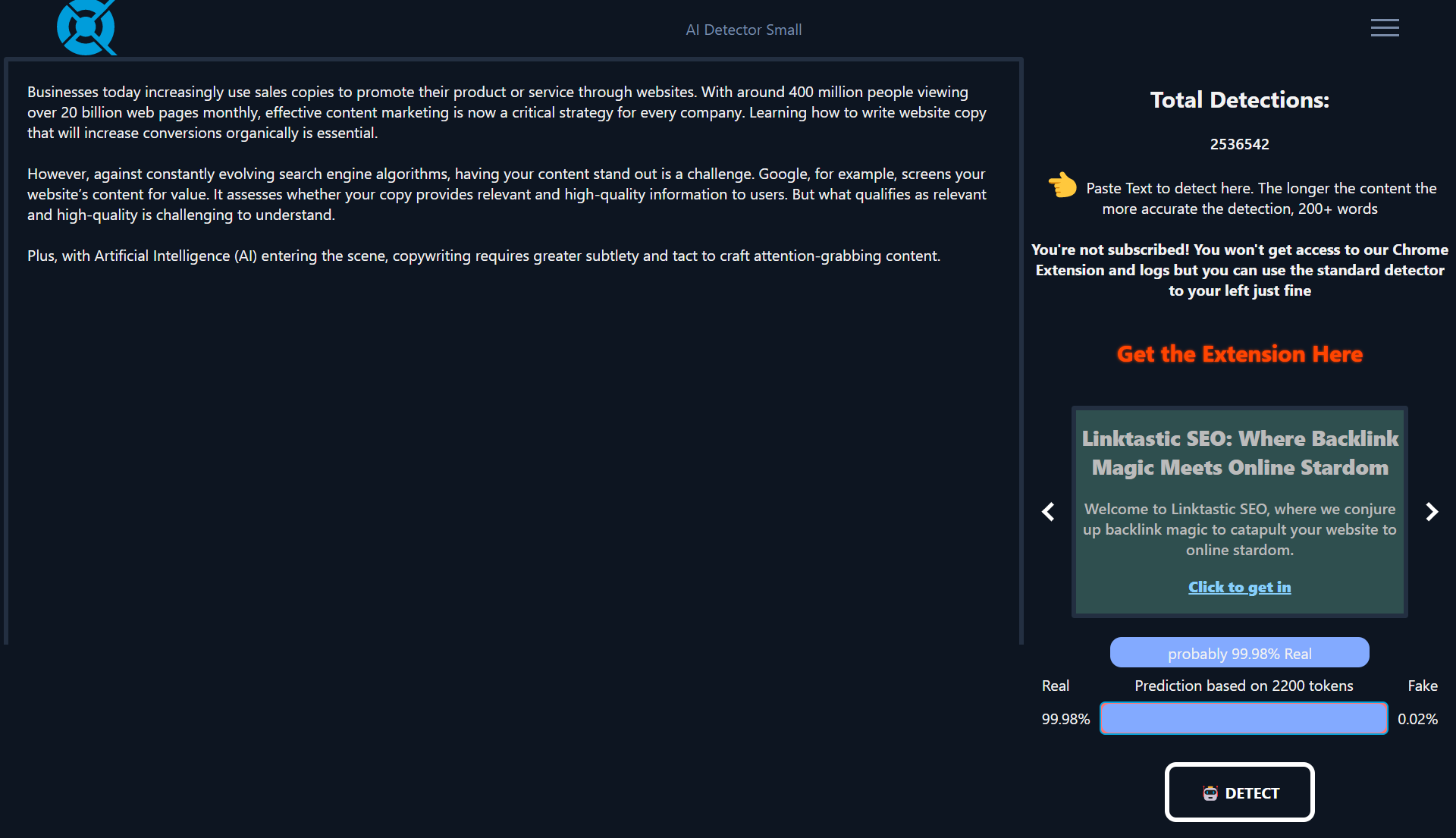 Human-written content
Human-written content
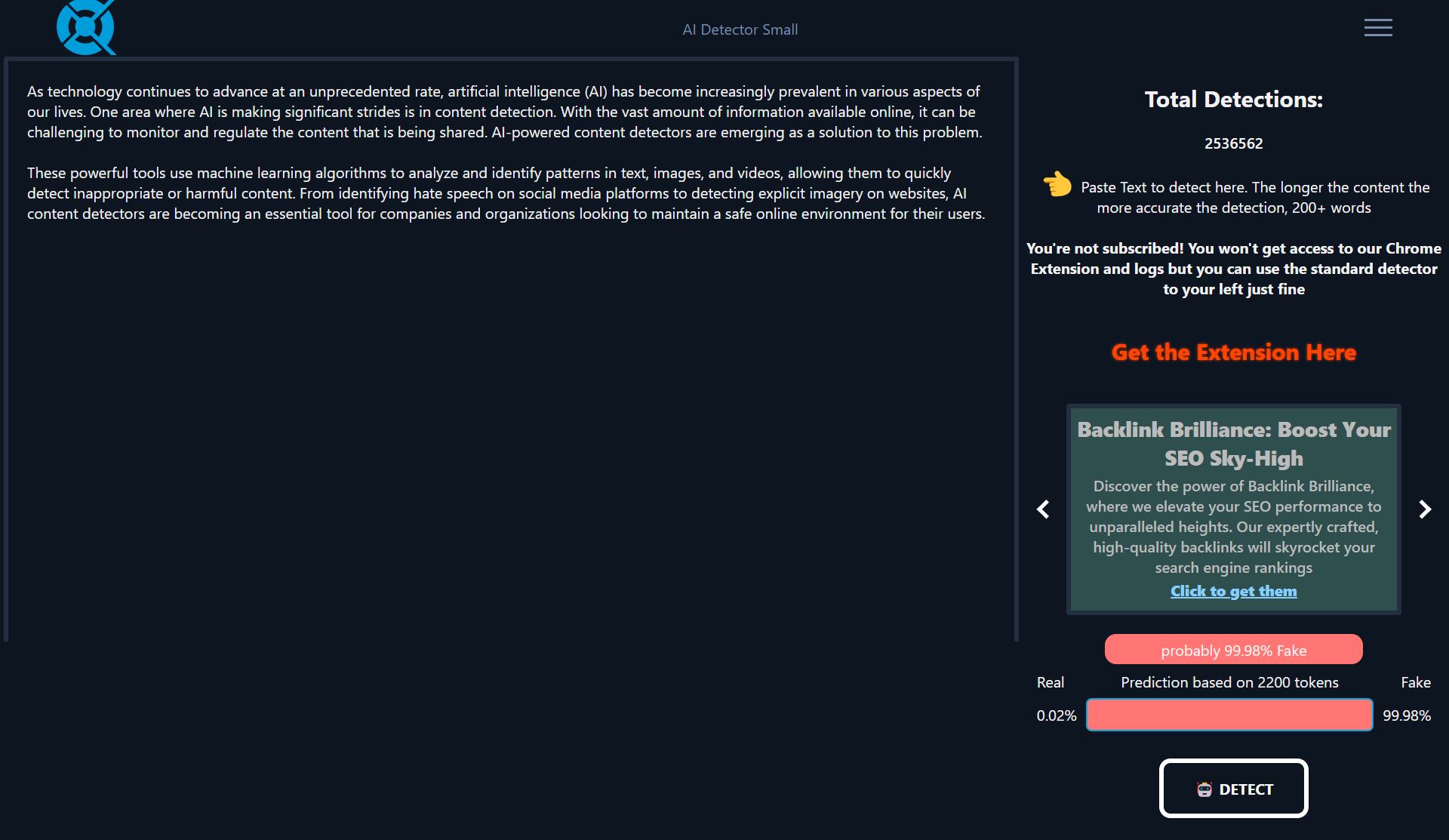 AI-generated content
AI-generated content
Features
- Easy-to-use AI content detection tool with SEO tools.
- Bulk analysis on a large amount of text.
Pricing
Free
8. Hugging Face
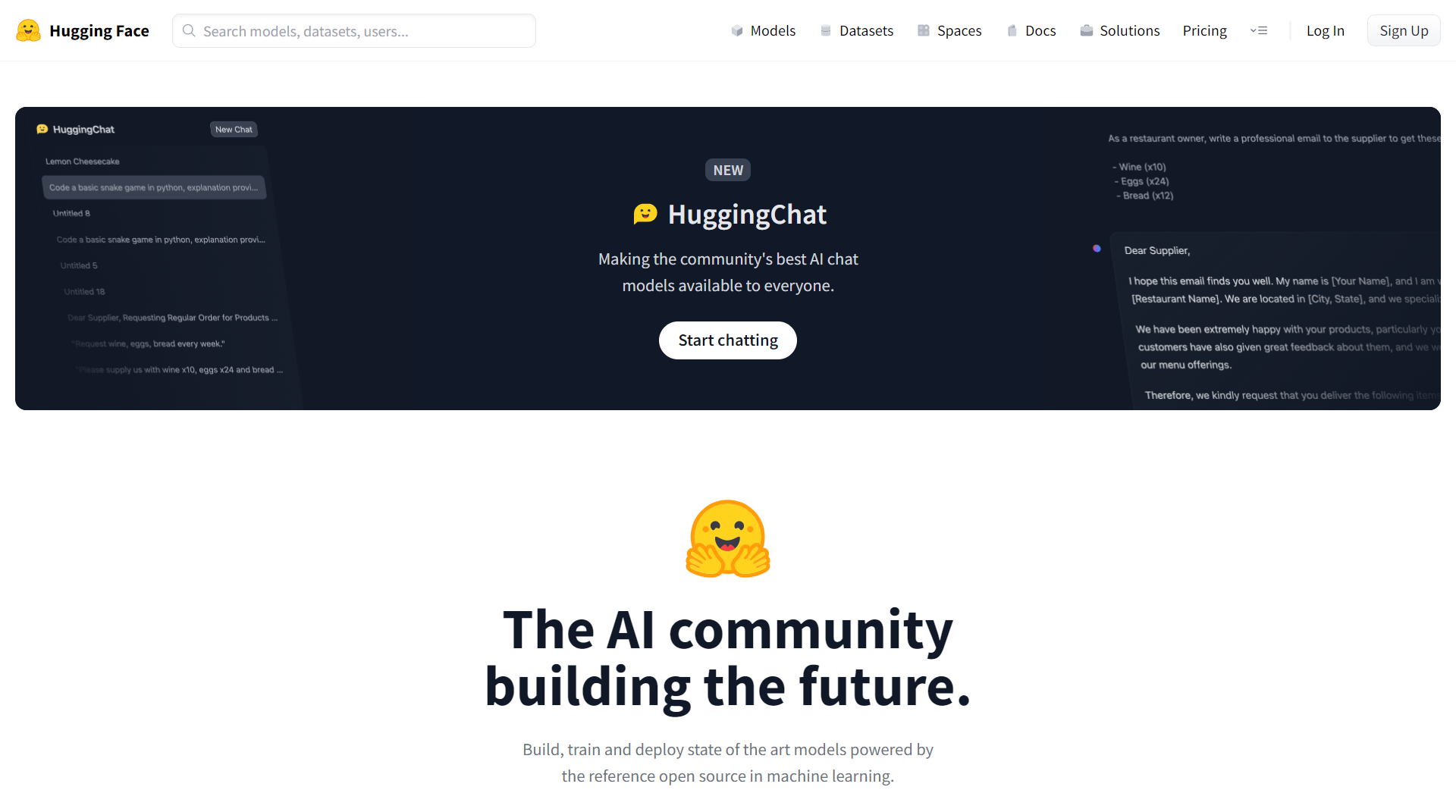
Hugging Face is an AI community used by over 5000 organizations to build, train, and deploy open-source machine learning models. A section of the website has a free AI detection tool to analyze written text for AI watermarks or imprints.
AI content detection with Hugging Face is straightforward – copy and paste the text and interpret the result to get numerical values of how human-written(real) or AI-written(fake) it is.
Features
- Easy-to-use interface.
- It provides an API for programmatic interactions.
Pricing
Free
Can AI-generated content be paraphrased to pass AI detection?
Yes, but read on.
AI-assisted content writing is slowly becoming a norm as the development of advanced natural language processing (NLP) techniques become more useful. However, the unregulated use of AI-powered writing tools leads to plagiarism and misinformation because AI writing tools rely heavily on existing data on the internet, which means that they can produce content that is similar or identical to existing content.
To bypass AI detection and avoid plagiarism, one option is to paraphrase the content. If done correctly, paraphrasing can significantly reduce the chances of detection by AI detectors. However, the effectiveness of paraphrasing depends on the mode of paraphrasing. If the paraphrasing is done by a human, the chances of detection are significantly reduced. On the other hand, if the paraphrasing is done using AI paraphrasing tools like QuillBot, there is a chance of detection by sophisticated AI detectors like Originality.ai.
That’s why paraphrasing AI-generated content should be viewed as an opportunity to infuse the brand’s unique voice into the content, not just as another obligation to pass off to AI. AI-generators are smart, and getting smarter by the day, but there might still be a disconnect between what it’s capable and its ability to match your brand’s unique voice and meets your audience’s needs. It’s advised to use paraphrasing to bring in the brand’s unique perspective.
Despite the potential benefits of using AI writing tools, it is still important to fact-check the content generated by them before publishing it. This helps to ensure that the quality of the content is maintained and that the content is accurate and less prone to plagiarism and misinformation. By doing so, you can speed up your content creation process while maintaining the integrity of your content.
Evidently, the right usage of AI-powered writing tools can be very beneficial.
Conclusion
The role of AI in content creation is only expected to grow, with a PWC report suggesting that AI could contribute up to $15.7 trillion to the global economy by 2030.
However, as search engines become more advanced, they prioritize quality, relevance, and user experience. As long as your AI-generated content meets these criteria, you won’t be disadvantaged in search rankings.
Whatever tools or processes you use to create content, the goal should always be to deliver value to the audience. From that perspective, AI content detectors are just another AI tool to assure quality content, not a threat. Businesses that embrace this philosophy will likely stay ahead of the curve, regardless of how AI evolves in the content landscape.
To sum up, AI content detectors have come to control the quality of the content produced by AI-assisted writing tools. It is only proactive to get acquainted with AI detectors as a writer, content marketer, or SEO specialist, as more and more writers are adding AI writing tools to their workflow.
This article has discussed how AI writing detectors work from a non-technical perspective and narrowed down reliable and accurate AI detectors to choose from on the internet.
FAQ
What's Google's opinion on AI-generated content?
How to best use AI content generators for better and faster content?
How will the development of AI detectors impact the AI content market?







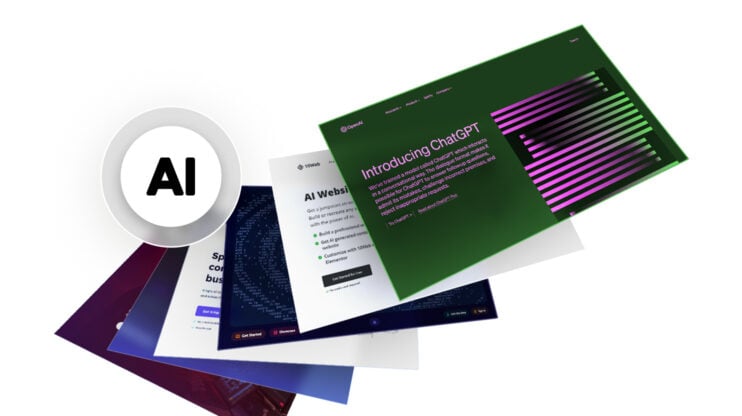
![Featured image for Top 15 AI Voice Generators of 2024 [+ Free Tool Inside] article](https://10web.io/blog/wp-content/uploads/sites/2/2023/12/DALL┬AE-2023-12-22-12.03.27-Sleek-professional-workspace-with-modern-laptop-on-minimalist-wooden-desk.-Laptop-screen-displays-text-to-speech-voice-generator-software-interface-.png)

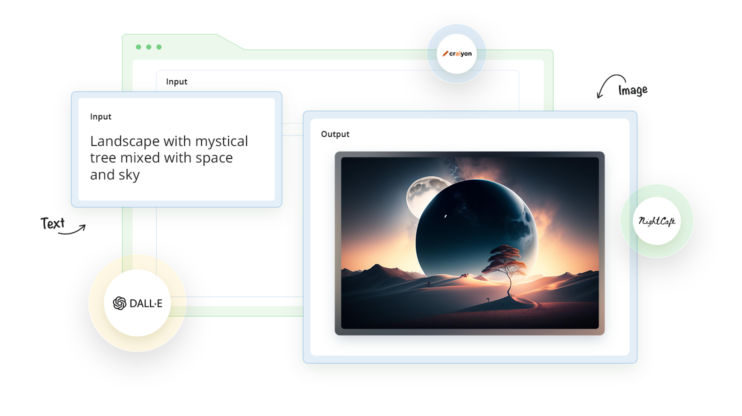
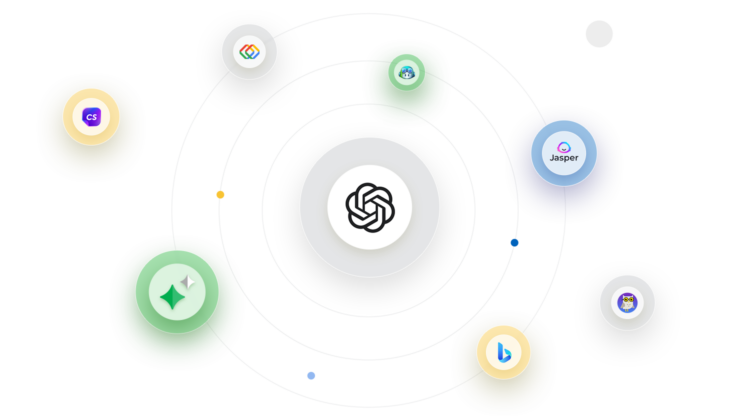
Fantastic recommendations. TY